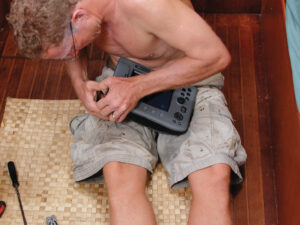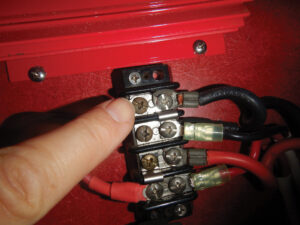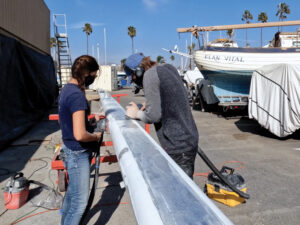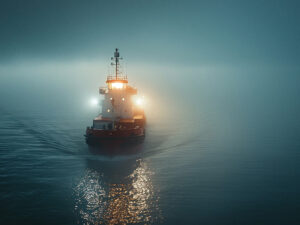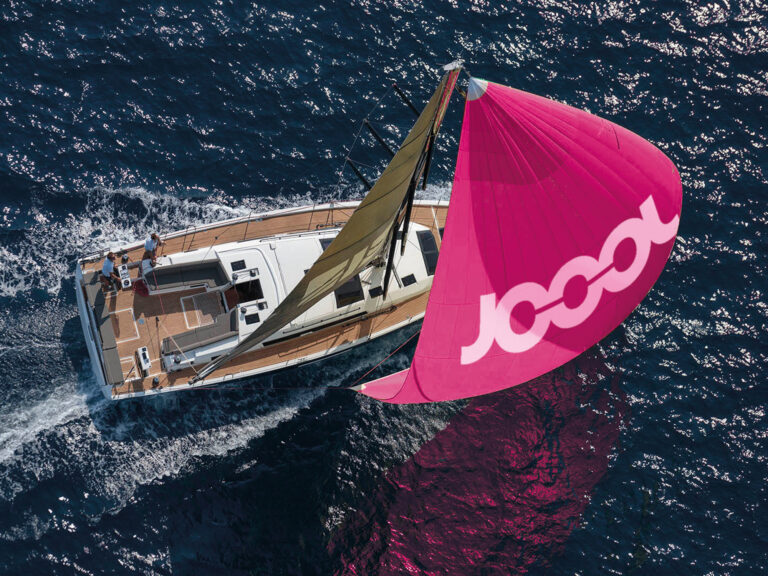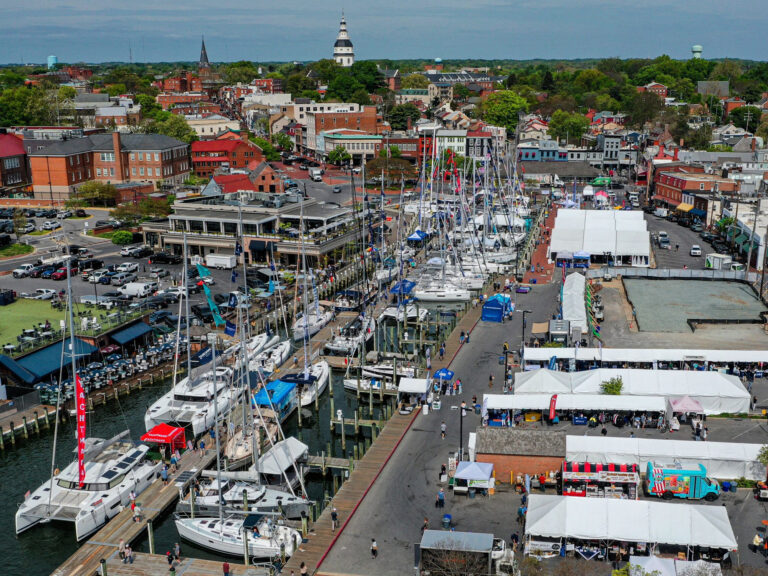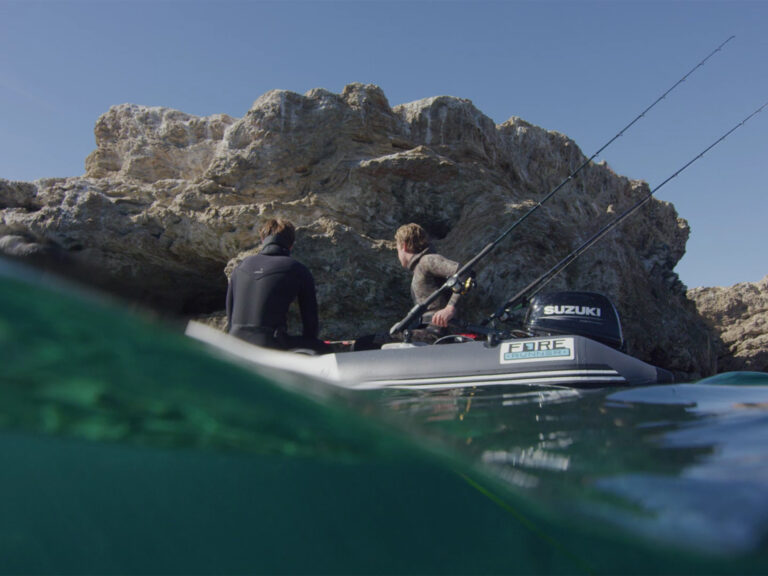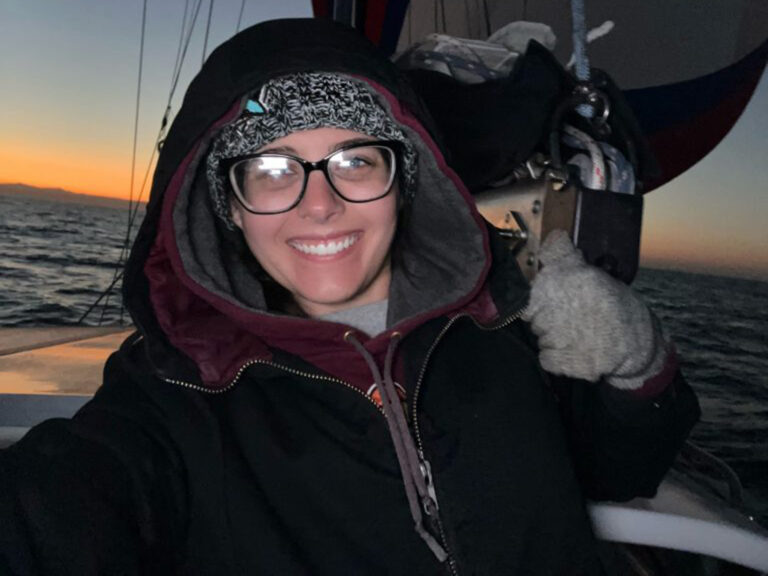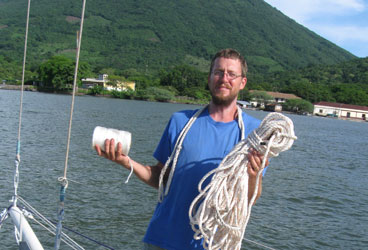
Zartman Buying in Bulk
Early into the building of the cruising boat that we now call home, my wife, Danielle, and I discovered that the cheapest way to buy any raw material was by weight. If you followed the supply chain back far enough, everything seemed to wholesale not by the gross, drum, or roll but by the pound. Whenever we were pricing suppliers for polyester resin, fiberglass cloth, bronze nails, or sail thread, we could be certain that we’d cut out as many middlemen as possible when things were sold by weight.
So I knew at once, when browsing through a commercial-fishing supply catalog, that I’d found the rock-bottom price for rope when I saw it advertised as coming in 20-pound rolls, with a discount given if it was bought by the pallet. The rope in question was pot warp—the line lobstermen use on their traps and marker buoys—and I knew that any rope that could stand the abuse, day after day, of winching up heavy traps from 100 feet down would have to be pretty tough stuff.
The Maine company’s offer of free shipping meant that delivery to us in California would represent significant savings, so I ordered a roll of three-eighths-inch pot warp as well as a two-pound roll of one-eighth-inch heading twine and a few netting needles so I’d be ready in case my lifelong dream of learning to weave cargo nets should ever be realized. I think I exhibited exemplary restraint, given the vast array of colors and diameters of both heading twine and pot warp that were available, but even so, my wife shook her head and offered that particularly indulgent smile she reserves for occasions of my nautical excess when the box full of shiny, supple, economical rope arrived.
“What are you going to do with all that?” she asked.
“Oh, uh—make sail ties and stuff,” I hedged. “And you know, it’s always useful to have spare line around.” True though that was, 1,500 feet seemed like an awful lot, even to me. But here it was, and it’d barely cost a nickel a yard.
As Ganymede motored down California’s San Joaquin River toward the ocean and her maiden voyage to Cabo San Lucas, the crew I’d taken on were kept busy learning to splice by putting eyes in one-fathom lengths of pot warp. “How many of these do you want?” asked Sal, wriggling cramped fingers and setting down a splice that, while not quite perfect, was certainly better than his previous five attempts.
“There’s plenty of warp, so keep going till you can’t stand it,” I told him, looking up from my own splice. “You can’t have too many of these handy six-footers.” As the voyage progressed, I found out just how true that was. When my fancy jib-sheet downhaul block shook its shackle pin out, I just lashed the sheet down with a bit of pot warp. When the drifter needed a tack extender to clear the lifeline, pot warp was there. The dinghy oars and mast, the sculling oar, the dinghy itself—all made fast for mere pennies a foot. And when the gaff saddle proved its poverty of design by tweaking most disastrously, well, you guessed it: I climbed up the mast with a length of warp in my teeth, made myself fast with one of Sal’s six-footers, and lashed up the throat of the sail. It could almost be said that it was pot warp that got us safely into harbor.
The heading twine, although I sadly haven’t gotten around to weaving any netting yet, hasn’t proved a waste. Sunglasses, flashlights, hats—anything needing a lanyard or a light lashing—can be secured within moments. Somehow the roll of twine that I keep handy in the saloon never seems to get any smaller, which is almost a shame since in the sail locker there’s a second unopened roll whose purchase I’ve yet to justify. Still, as our voyage progresses and things wear out and break, I have no doubt that both the heading twine and the coil of pot warp left over from making a 200-foot dinghy anchor rode will begin to run low. But by then, perhaps, we’ll have made it back to Maine, and while Danielle and the girls browse funky thrift stores to their hearts’ content, I can lose myself in the wonder of the fishermen’s chandleries, not worrying so much about what I can afford but by how much I can carry out.
Ben Zartman and his family continue to cruise—and look for bargains—aboard their backyard-built Cape George 31, Ganymede_._

